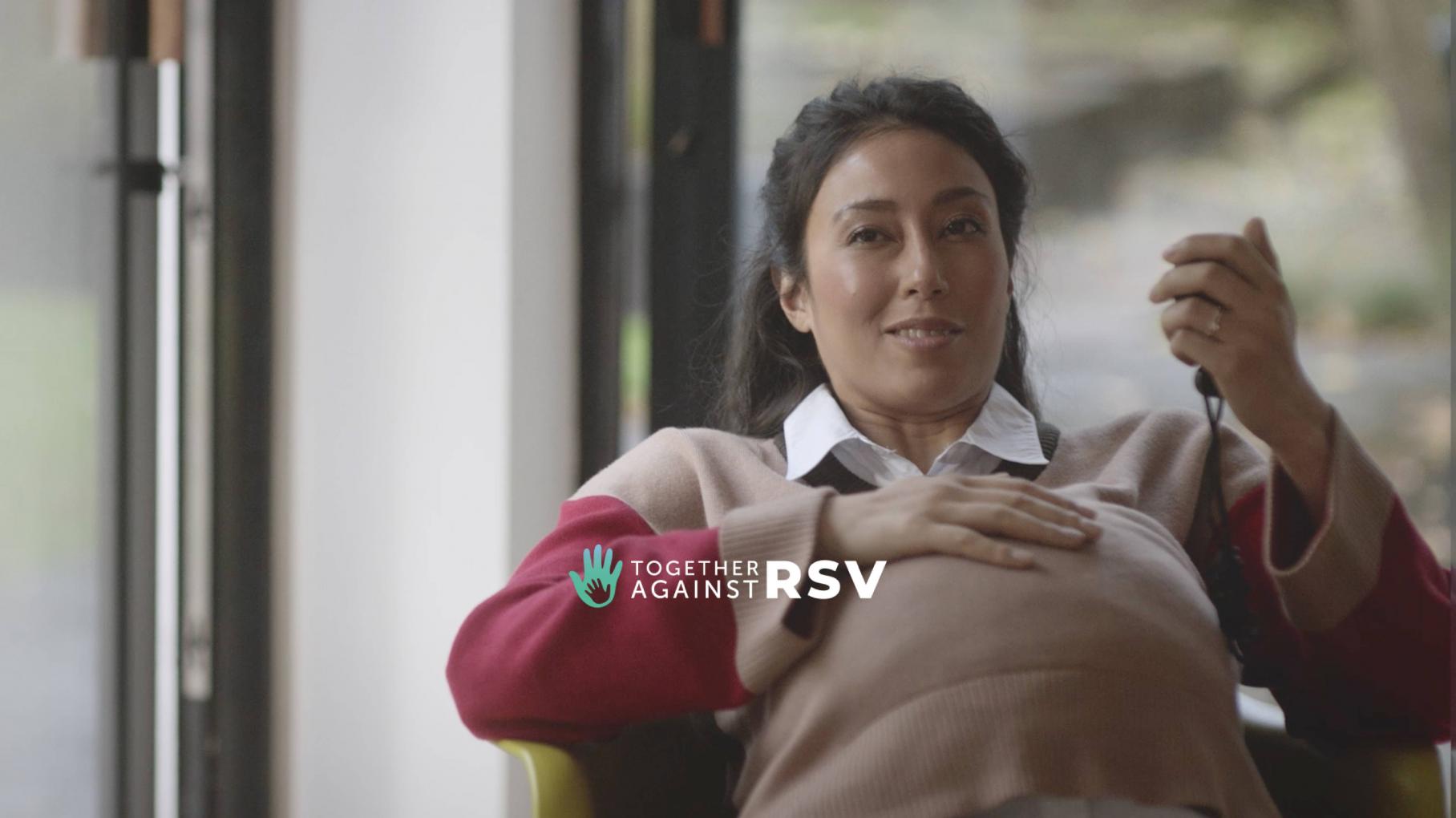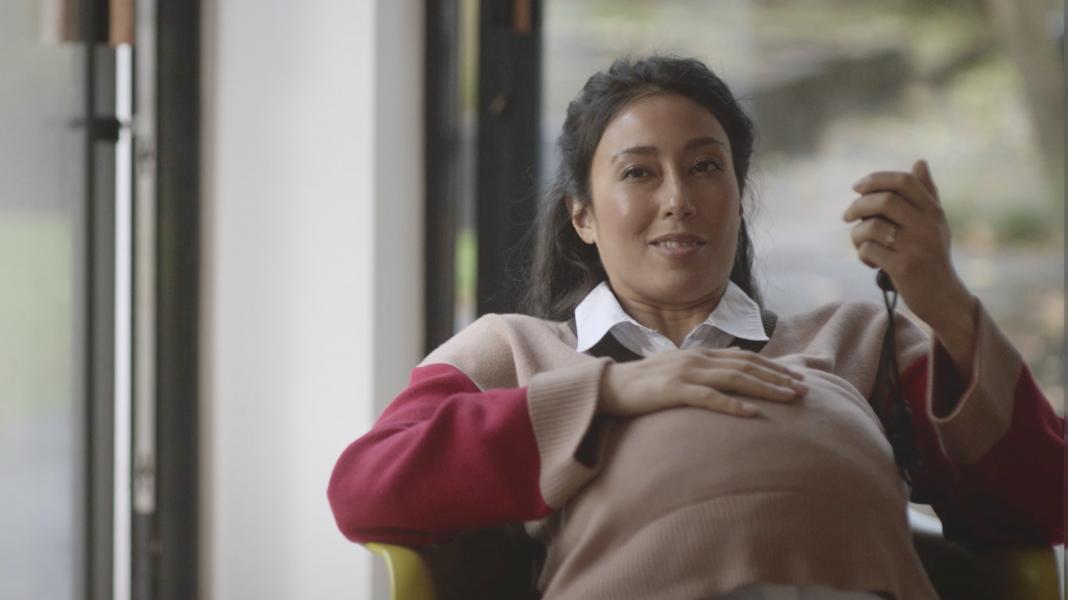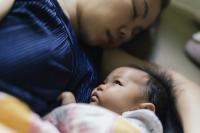Welcome to our RSV hub where you can find out more about respiratory syncytial virus, pronounced "sin-si-tial", otherwise known as RSV, the illness it can cause and the symptoms you should look out for.1
In Australia, RSV outbreaks typically occur during the autumn and winter months, often peaking in June and July.1,2
This hub is for the general public and is part of the Together Against RSV disease awareness campaign, created and funded by Sanofi.
Each year, RSV results in around 15,000 hospital admissions in Australian children aged under 5. Of these, up to one in four will spend time in the intensive care unit.3
Like the flu, RSV outbreaks in Australia are often higher at certain times of year. In areas with a more temperate climate, like South Australia, RSV outbreaks typically occur during the winter months, just prior to the flu season. In tropical areas, such as northern Australia, RSV typically has two outbreaks during autumn and winter.1,3
Since the emergence of the COVID-19 pandemic, there have been large scale out-of-season RSV outbreaks, which have corresponded with easing restrictions. It is unclear how long the disruptions to season patterns will occur for due to the impact of COVID-19, so it is important to remain vigilant.2,4
Infection by RSV is so common that most children will have been infected with the virus by the age of 3. Exposure to the virus may provide some immunity against getting infected again, but reinfection is still possible.1
Anyone can get RSV, however there are certain groups of people who may be at an increased risk of developing severe infections:1,3,5-7
- Premature babies
- Low birth weight babies
- Infants with underlying chronic illnesses
- Infants and children with a weakened immune system
- Australian indigenous children have an increased risk of severe RSV and are 3-6 times more likely to be hospitalised for RSV compared to non-indigenous children
- Older children and adults may also have an increased risk of severe symptoms if they have existing chronic heart, lung or immune problems
- Older adults, especially those 65 years and older are at a higher risk of severe RSV infection
All infants and young children are at risk of contracting RSV, and progressing to severe illness, even those who are otherwise healthy and without any underlying health conditions.3
Whilst RSV usually causes mild illness, it may lead to conditions such as bronchiolitis and pneumonia, which can be severe in infants especially those under 12 months. RSV is the most common cause of bronchiolitis and pneumonia in infants under 12 months.3
For most people, RSV infection causes a mild respiratory illness. Symptoms typically begin 2 to 8 days after exposure to the virus and may last for a week or more.1,3,5
In mild cases, symptoms can include:1,5
- Runny or blocked nose
- Cough
- Sneezing
- Sore throat
- Fever
- Headache
- Poor appetite
- Ear infection (less common)
In severe cases, symptoms can include:1,8
- Wheezing
- Difficulty breathing
- Severe cough
- Fever
- Bluish colour of the skin due to lack of oxygen (cyanosis)
- Lethargy (in babies)
- Poor feeding (in babies)
- Irritability (in babies)
There is currently no specific curative treatment for RSV and prevention is the preferred approach.3
Treatment is therefore aimed at managing and relieving symptoms. This can include:1,3,5
- Bed rest
- Staying hydrated with regular sips of water or
- More frequent feeds for babies
- Paracetamol and ibuprofen to relieve fever
If a child has been hospitalised, they may be treated with intravenous fluids and oxygen.1
Some simple ways to stop the spread of RSV include:3,8,9
- Washing your hands regularly with soap and warm water or using hand sanitiser
- Wearing a mask in crowded areas or if you're visiting high risk individuals
- Regularly clean surfaces and items that may be contaminated, including toys shared among children
- Staying at home if you don't feel well
- Covering your nose and mouth when sneezing or coughing
- Avoiding sharing cups, glasses, or cutlery with people if you're unwell
- Throwing out tissues as soon as you've used them
- Avoiding contact with high risk people such as infants, older people and immunocompromised individuals when sick
For more information about RSV preventions speak to your healthcare professional.
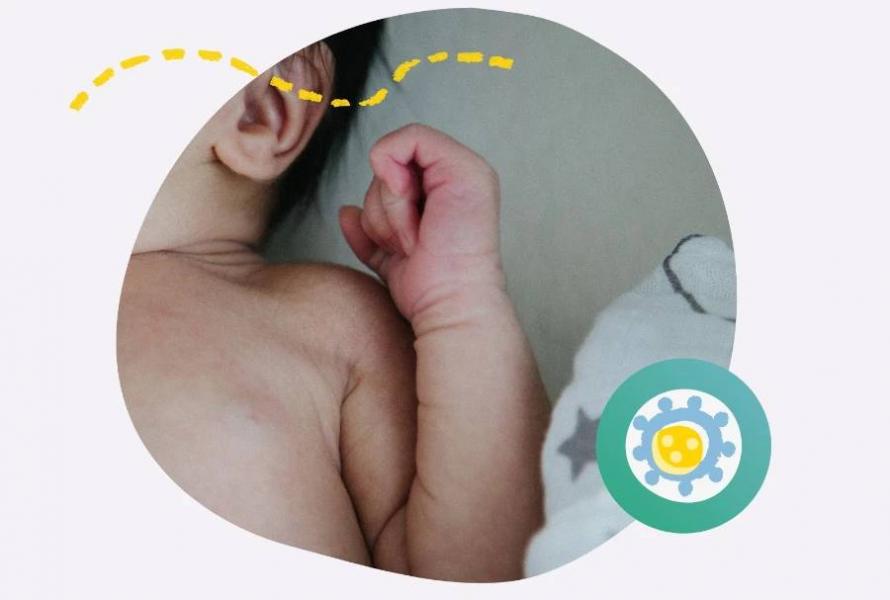
In Australia, RSV outbreaks typically occur during the autumn and winter months, often peaking in June and July.1,2
This hub is for the general public and is part of the Together Against RSV disease awareness campaign, created and funded by Sanofi.
Each year, RSV results in around 15,000 hospital admissions in Australian children aged under 5. Of these, up to one in four will spend time in the intensive care unit.3
Like the flu, RSV outbreaks in Australia are often higher at certain times of year. In areas with a more temperate climate, like South Australia, RSV outbreaks typically occur during the winter months, just prior to the flu season. In tropical areas, such as northern Australia, RSV typically has two outbreaks during autumn and winter.1,3
Since the emergence of the COVID-19 pandemic, there have been large scale out-of-season RSV outbreaks, which have corresponded with easing restrictions. It is unclear how long the disruptions to season patterns will occur for due to the impact of COVID-19, so it is important to remain vigilant.2,4
Infection by RSV is so common that most children will have been infected with the virus by the age of 3. Exposure to the virus may provide some immunity against getting infected again, but reinfection is still possible.1
Anyone can get RSV, however there are certain groups of people who may be at an increased risk of developing severe infections:1,3,5-7
- Premature babies
- Low birth weight babies
- Infants with underlying chronic illnesses
- Infants and children with a weakened immune system
- Australian indigenous children have an increased risk of severe RSV and are 3-6 times more likely to be hospitalised for RSV compared to non-indigenous children
- Older children and adults may also have an increased risk of severe symptoms if they have existing chronic heart, lung or immune problems
- Older adults, especially those 65 years and older are at a higher risk of severe RSV infection
All infants and young children are at risk of contracting RSV, and progressing to severe illness, even those who are otherwise healthy and without any underlying health conditions.3
Whilst RSV usually causes mild illness, it may lead to conditions such as bronchiolitis and pneumonia, which can be severe in infants especially those under 12 months. RSV is the most common cause of bronchiolitis and pneumonia in infants under 12 months.3
For most people, RSV infection causes a mild respiratory illness. Symptoms typically begin 2 to 8 days after exposure to the virus and may last for a week or more.1,3,5
In mild cases, symptoms can include:1,5
- Runny or blocked nose
- Cough
- Sneezing
- Sore throat
- Fever
- Headache
- Poor appetite
- Ear infection (less common)
In severe cases, symptoms can include:1,8
- Wheezing
- Difficulty breathing
- Severe cough
- Fever
- Bluish colour of the skin due to lack of oxygen (cyanosis)
- Lethargy (in babies)
- Poor feeding (in babies)
- Irritability (in babies)
There is currently no specific curative treatment for RSV and prevention is the preferred approach.3
Treatment is therefore aimed at managing and relieving symptoms. This can include:1,3,5
- Bed rest
- Staying hydrated with regular sips of water or
- More frequent feeds for babies
- Paracetamol and ibuprofen to relieve fever
If a child has been hospitalised, they may be treated with intravenous fluids and oxygen.1
Some simple ways to stop the spread of RSV include:3,8,9
- Washing your hands regularly with soap and warm water or using hand sanitiser
- Wearing a mask in crowded areas or if you're visiting high risk individuals
- Regularly clean surfaces and items that may be contaminated, including toys shared among children
- Staying at home if you don't feel well
- Covering your nose and mouth when sneezing or coughing
- Avoiding sharing cups, glasses, or cutlery with people if you're unwell
- Throwing out tissues as soon as you've used them
- Avoiding contact with high risk people such as infants, older people and immunocompromised individuals when sick
For more information about RSV preventions speak to your healthcare professional.
Watch to discover more about RSV and learn how you can reduce the spread to help protect your infant.
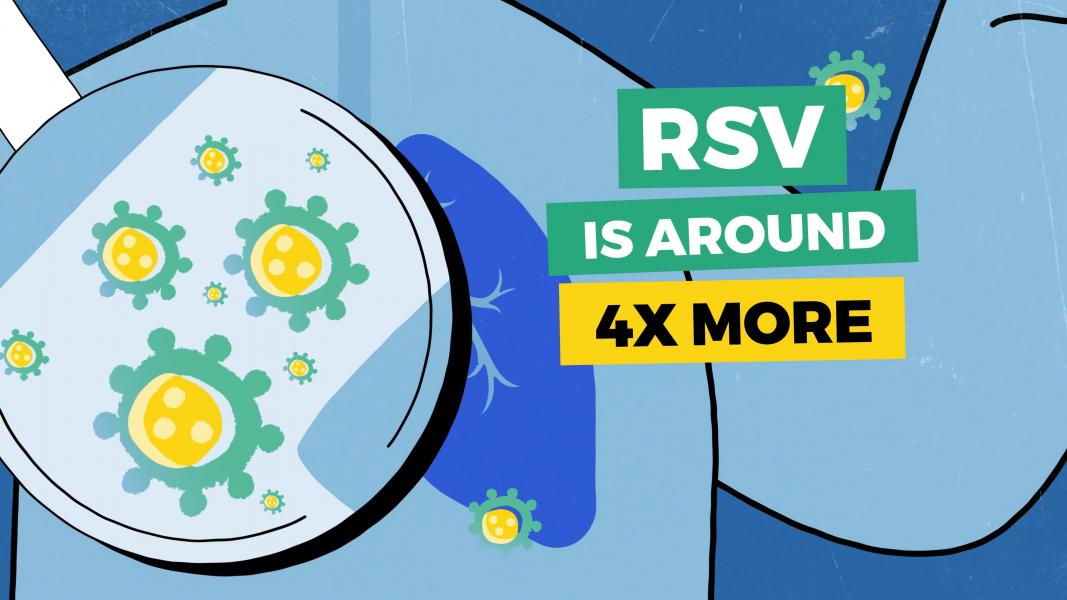
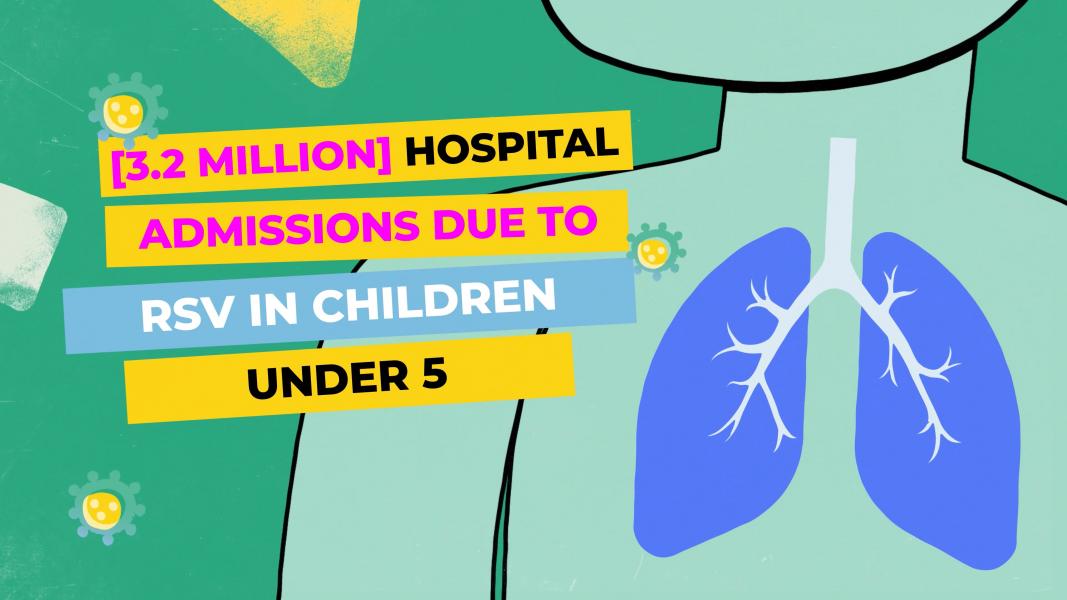
Watch to discover more about RSV and learn how you can reduce the spread to help protect your infant.
It is important to remember that although most cases of RSV infections in babies are mild and clear up on their own within a few weeks, some can be more serious8, such as the story of baby Florence.
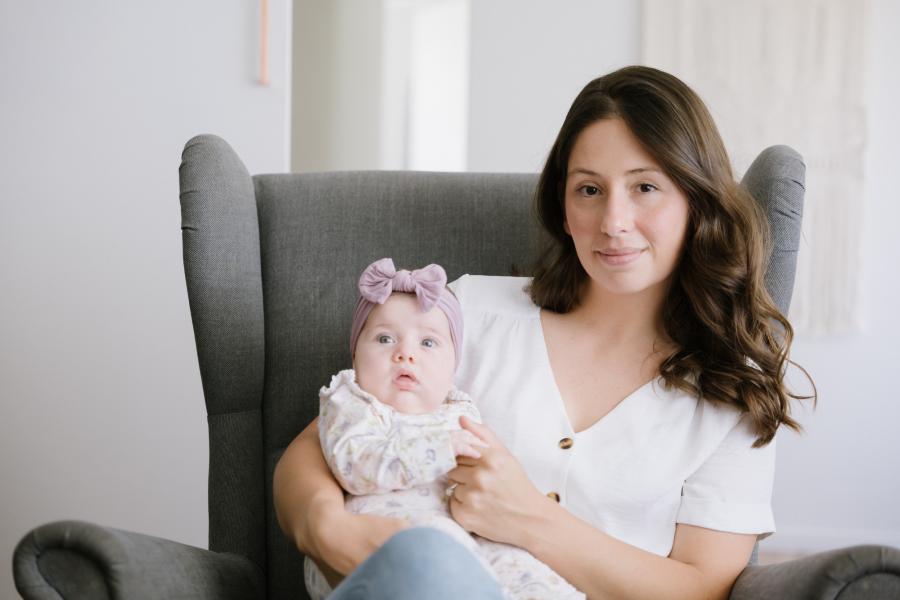
It is important to remember that although most cases of RSV infections in babies are mild and clear up on their own within a few weeks, some can be more serious8, such as the story of baby Florence.
Together Against RSV is a disease awareness initiative from Sanofi to educate and inform the general public about illnesses caused by RSV.

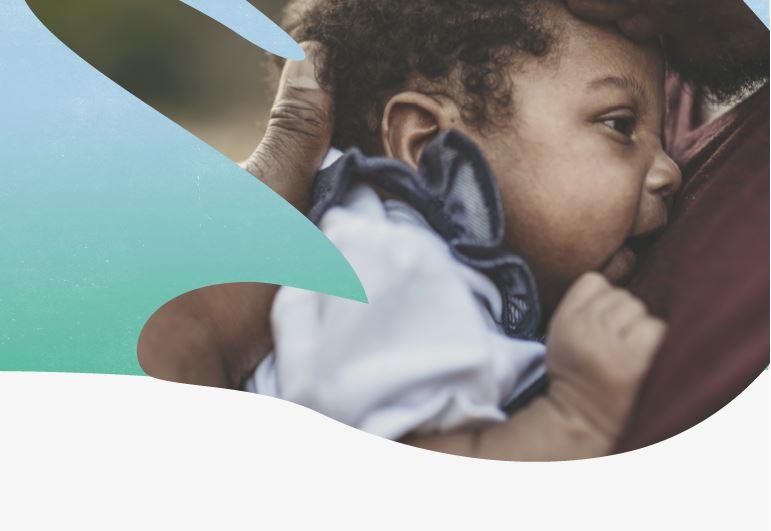
Together Against RSV is a disease awareness initiative from Sanofi to educate and inform the general public about illnesses caused by RSV.

-
NSW Government. NSW Health. Respiratory syncytial virus (RSV). Available at: https://www.health.nsw.gov.au/Infectious/factsheets/Pages/respiratory-syncytial-virus.aspx (accessed 1 February 2024).
-
Eden J-S, et al. Off-season RSV epidemics in Australia after easing of COVID-19 restrictions. Nature Communications. 2022;13:2884.
-
Evohealth report, May 2023. Time to act: protecting our children from RSV. Available at: https://www.evohealth.com.au/reports/time-to-act-protecting-our-children-from-rsv/ (accessed 1 February 2024).
-
Saravanos GL, et al. RSV Epidemiology in Australia Before and During COVID-19. Pediatrics. 2022;149(2):e2021053537.
-
The Sydney Children’s Hospital Network. Fact Sheet – respiratory syncytial virus (RSV). Available at: Respiratory syncytial virus (RSV) factsheet | SCHN Site (nsw.gov.au) (accessed 13 February 2024).
-
Centers for Disease Control and Prevention. RSV in Older Adults and Adults with Chronic Medical Conditions. Available at: https://www.cdc.gov/rsv/high-risk/older-adults.html (accessed 1 February 2024).
-
Karron RA. Plotkin’s Vaccines. Seventh edition. Chapter 51, Respiratory Syncytial Virus Vaccines. Elsevier Inc. 2018.
-
Mayo Clinic. Respiratory syncytial virus (RSV). Available at: https://www.mayoclinic.org/diseases-conditions/respiratory-syncytial-virus/symptoms-causes/syc-20353098 (accessed 1 February 2024).
-
Health Direct. Respiratory syncytial virus. Available at: https://www.healthdirect.gov.au/respiratory-syncytial-virus-rsv (accessed 1 February 2024).
